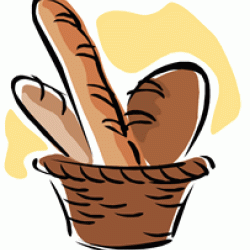Source Institutions
Source Institutions
Add to list Go to activity
Activity link broken? See if it's at the internet archive

Learners use Benedict’s solution and heat to test for the presence of simple sugars in glucose, sucrose, starch, and starch combined with amylase. They find simple sugars only in the glucose and in the starch with amylase solution. Learners discover the difference in structure between three different sugar molecules: glucose, sucrose, and starch. They observe that amylase, an enzyme in saliva, can break the bonded molecules in starch into separate glucose molecules. In the body, amylase breaks down starches to make them easier to digest. This activity is currently used in the Biochemistry Unit in OMSI's Chemistry Lab. Cost estimates are per 100 learners. For safety reasons, adult supervision is recommended with use of the hot plate; this activity works best as a demonstration for younger audiences.
- 30 to 45 minutes
- 10 to 30 minutes
- $5 - $10 per group of students
- Ages 11 - adult
- Activity, Demonstration, Experiment/Lab Activity
- English
Quick Guide
Materials List (per group of students)
- Benedict’s solution (keep at least 100 ml on hand; instructions included)
- Soluble starch (keep 50 g on hand)
- Dextrose (keep 25 g on hand)
- Sucrose (keep 25 g on hand)
- Dry fungal amylase (keep 10 g on hand)
- Four small test tubes
- One test-tube rack
- One 250-ml glass beaker
- One 100-ml beaker
- One thin test-tube brush
- Five 30-ml dropper bottles
- One hot plate
- One clock
- A Plexiglas shield for the hot plate
- Three plastic bottles, 250- to 500-ml size
Subjects
-
Engineering and Technology
-
Engineering
- Chemical Engineering
-
Engineering
-
Life Sciences
-
Human Body
- Digestion
-
Human Body
-
Physical Sciences
-
Chemistry
- Chemistry of Life
-
Chemistry
Informal Categories
- Food and Cooking
Audience
To use this activity, learners need to:
- see
- see color
- read
- touch
Learning styles supported:
- Involves hands-on or lab activities
Other
Components that are part of this resource:
This resource is part of:
Access Rights:
- Free access
By:
Rights:
- All rights reserved, Oregon Museum of Science and Industry, 1997
Funding Source:
- National Science Foundation
